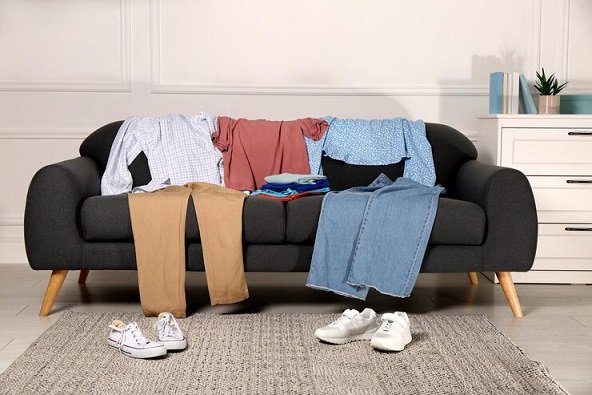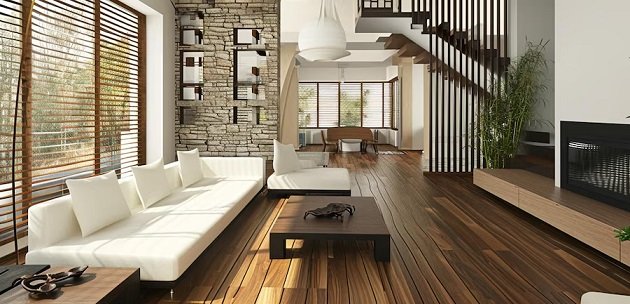Moving to a smaller home can feel like a daunting prospect, especially when transitioning from a spacious environment in a more affordable city like Houston to a compact living space in a bustling, expensive urban center like Chicago. However, embracing this change doesn’t have to mean compromising on comfort, functionality, or style. With a few clever interior design and décor strategies, you can transform your smaller home into a cozy, efficient, and stylish space. So, without further ado, let’s explore nine tips that will help you navigate this transition smoothly.
Read more: Solana Beach Furniture Stores
1. Sorting and Selecting Furniture
The first step in your downsizing journey involves a critical assessment of your furniture. Not all pieces from your previous home will fit or be suitable for your new, smaller space. Start by identifying which items are essential and which ones can be sold, donated, or stored. If you’re moving to a more expensive area, it might be more economical and practical to purchase major pieces of furniture once you’ve settled down. This approach allows you to choose items that are the right scale for your new home. Also, considering the potential traffic complications in cities like Houston, employing professional movers to transport your existing furniture is a wise decision. A professional Houston long distance moving company can ensure your valuables arrive safely and help alleviate the stress of moving.
2. Maximize Vertical Space
In smaller homes, making use of vertical space is a game-changer. Walls offer untapped potential for storage and decoration, allowing you to keep the floor area uncluttered. Install floating shelves to store books, decorative items, or plants. Use wall-mounted cabinets for additional storage in kitchens and bathrooms. By focusing on vertical space, you not only increase your storage options but also draw the eye upward, creating the illusion of a larger room. This technique is particularly effective in living areas and bedrooms.
3. Choose Multi-functional Furniture
Selecting furniture that serves multiple purposes is a smart move in a smaller home. Look for beds with storage drawers underneath to keep linens and out-of-season clothing. Consider a dining table that can extend for guests but remains compact for daily use. Ottomans with storage inside are perfect for hiding away items while providing extra seating or a footrest. Multi-functional furniture not only saves space but also reduces clutter, keeping your home neat and organized.
4. Embrace Light Colors and Mirrors
Light colors and mirrors are your allies in making a small space feel larger and more open. Pale walls can reflect natural light, brightening the room and giving the impression of more space. When selecting furniture and decor, opt for light colors that complement the walls and flooring. Mirrors strategically placed across from windows can double the amount of natural light in a room and visually expand the space. This trick is particularly useful in living rooms and bedrooms where you want to create a serene, spacious atmosphere.
5. Declutter Regularly
Clutter is the enemy of small spaces. It can make even the most well-designed room feel cramped and chaotic. Embrace a minimalist lifestyle by regularly sorting through your belongings and keeping only what you truly need or love. This doesn’t mean your home has to feel bare or devoid of personality. Instead, it encourages you to make thoughtful choices about what items deserve a place in your home. Regular decluttering sessions will help maintain a sense of spaciousness and order.
6. Invest in Quality Over Quantity
When space is limited, every item you choose to bring into your home should contribute positively to your living environment. Opting for fewer but higher-quality pieces can make your space feel more luxurious and well-curated. This approach applies to furniture, textiles, and even decorative items. A high-quality sofa that doubles as a statement piece, for example, not only provides comfort but also elevates the aesthetics of your living room. Investing in quality over quantity means you’ll have a home filled with items that are both beautiful and durable, ensuring your space remains uncluttered and stylish.
7. Create Defined Zones
In a smaller home, creating distinct areas for different activities can make the space feel larger and more organized. This can be achieved through the strategic placement of furniture, area rugs, and lighting. For instance, a rug can separate the living area from the dining space, while pendant lighting can highlight the kitchen or dining table, creating a sense of separation without the need for walls. These defined zones help manage the flow of the space, making it feel more functional and cohesive, even within a compact layout.
8. Add Personal Touches
A smaller home provides the perfect canvas for expressing your personal style and memories. Incorporate elements that reflect your personality, such as family photographs, artwork, or collections. These personal touches make your space feel more like home and can transform a small living area into a cozy, welcoming environment. The key is to display these items thoughtfully, ensuring they add to the aesthetics of the space rather than contribute to clutter. Floating shelves, gallery walls, and decorative trays are great ways to showcase your items without overwhelming the room.
9. Incorporate Greenery
Introducing plants into your home decor not only adds a splash of color and life to your space but also has health benefits, including improved air quality and reduced stress levels. In smaller homes, opt for compact, low-maintenance plants that can thrive indoors. Hanging planters, wall-mounted plant shelves, and small tabletop pots are excellent ways to incorporate greenery without sacrificing valuable floor space. Plants not only beautify your living area but also create a more vibrant and nurturing environment.
Conclusion:
Downsizing to a smaller home presents an opportunity to rethink your living space and embrace a more intentional way of living. By following some or all of these tips above, you can create a comfortable, stylish home that meets your needs. Remember, the goal isn’t to replicate the life you had in a larger home but to create a new space that reflects your current lifestyle and preferences. With creativity and planning, your smaller home can offer all the comfort, function, and style you desire, proving that less really can be more.

















